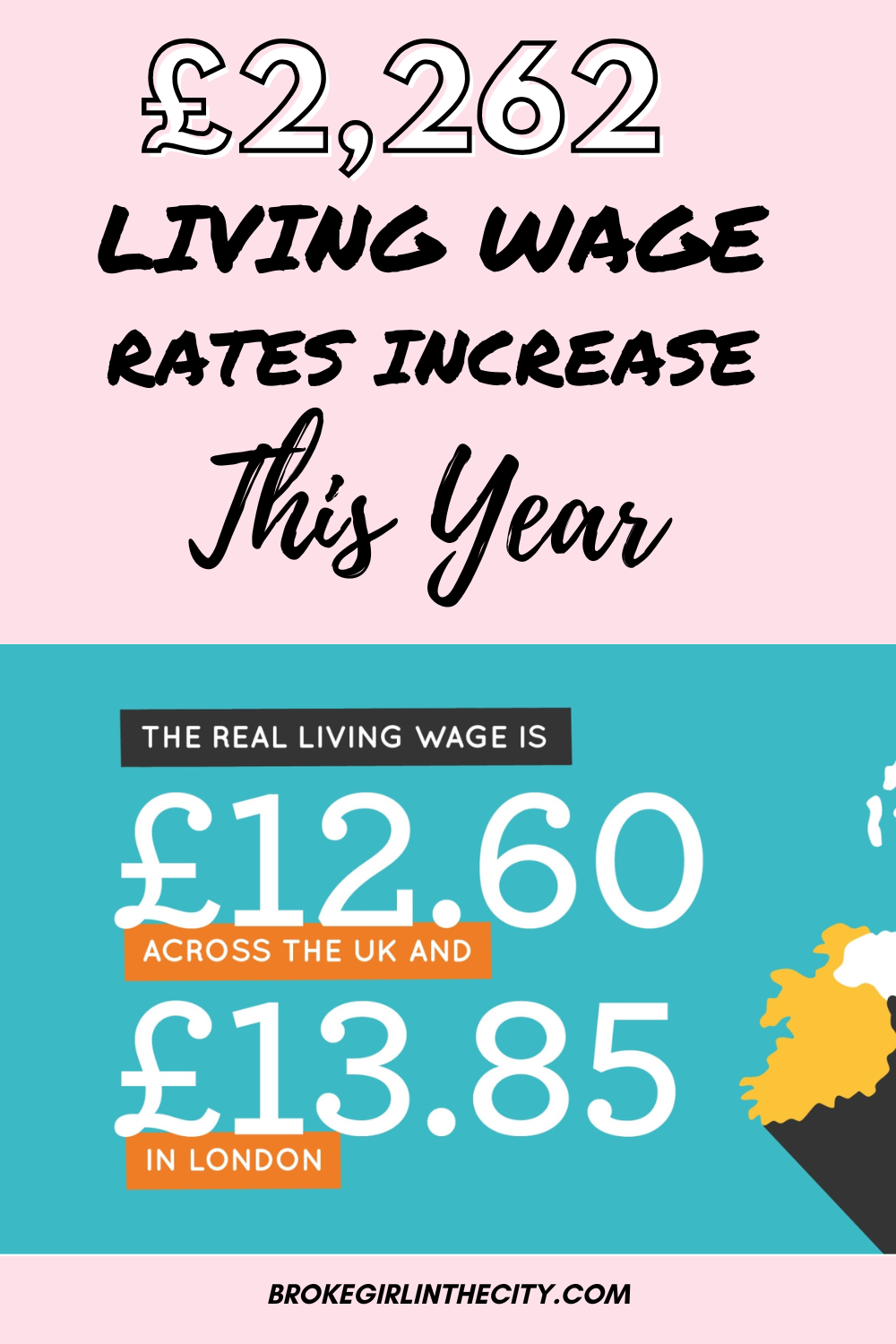
The new real Living Wage rates are now worth over £2,262 more per year in the UK
Real Living Wage Rates Increases to £12.60 in UK and £13.85 in London
- Almost half a million Living Wage workers are set for a pay boost
- Over 15,000 Living Wage Employers are signed up to pay the new rates
- The real Living Wage is the only UK wage rate independently calculated based solely on the actual cost of living
- The government’s National Living Wage is the legal minimum employers must pay for over-21s
- The new real Living Wage rates are now worth over £2,262 more per year in the UK than the legal minimum, and over £4,700 more in London
- Nearly £3.5bn in extra wages has gone to low paid workers since 2011
Almost half a million people will get a vital cost-of-living pay boost. The real Living Wage rates will rise to £12.60 an hour across the UK (60p or 5% increase) and £13.85 an hour in London (70p or 5.3% increase). Such people are working for more than 15,000 real Living Wage Employers throughout the country.
Recent research by the Living Wage Foundation shows that despite inflation easing, many of Britain’s 3.7m low paid workers are still struggling with the impact of years of high prices. Of these workers, 42% have less than £10 left each week after covering essential expenses. Additionally, 39% have used a food bank in the past year. Furthermore, 32% have skipped meals for financial reasons.
The real Living Wage vs the ‘National Living Wage’ – the difference
The real Living Wage is not the same as the government’s basic wage rate. For those over the age of 21, it is often called the “National Living Wage”. It is a higher, voluntary rate that is independently calculated based solely on the actual cost of living. The Government’s rate is the legal minimum businesses are obligated to pay by law.
The real Living Wage applies to all workers over the age of 18 working for a Living Wage Employer. It is £12.60 an hour. The ‘National Living Wage’ applies to those over the age of 21 and is worth £11.44 an hour.
A full-time worker on the new, real Living Wage would earn £2,262 more annually. This is in comparison to a worker earning the current government minimum (NLW). They would also earn £1,170 more than their current pay. In London, a full-time worker on the new real Living Wage rate would earn an additional £4,700 a year. This is compared to a worker on the current NLW. They would also earn £1,365 more than their current pay.
“Low paid workers have been hardest hit by the cost-of-living crisis and are still struggling to stay afloat amidst persistently high prices. The real Living Wage remains the only UK wage rate calculated based on actual living costs, and the new rates announced today will make a massive difference to almost half a million workers who will see their pay increase.” Katherine Chapman, Living Wage Foundation Director
The Living Wage movement continues to grow
Even with economic challenges, record numbers of employers have signed up in the past three years. They are paying the real Living Wage. They also extend this to their third-party contractors like cleaners and security guards. As a result, 1 in 9 employees now works for an accredited Living Wage Employer.
There are now over 15,000 Living Wage Employers, with recent accreditations including Pieminister, Fred Perry and the National Theatre. They join half of the FTSE 100 companies and household names like Aviva, Everton FC, Ikea, Burberry, and LUSH. Thousands of small businesses are also choosing to pay the real Living Wage. This provides workers and families with greater security and stability.
There are now 180 Living Hours Employers.
This includes abrdn, Aviva, and West Brom Building Society. They go beyond payment of the real Living Wage. They also offer a guaranteed minimum of 16 hours work a week. Employees get a month’s notice of shift patterns. A contract is given that reflects the hours worked.
Over 50 employers are signed up to the Living Wage Foundation’s Living Pension accreditation. They want to make sure their workers never face poverty in retirement. Living Pension Employers offer a Living Pension savings level using either a cash (£2,950) or percentage (12%) target. The employer must contribute at least 7%, or £1,720.
Darren Taylor, Country People and Culture Manager, IKEA UK&IE said:
“A business’ success is purely driven by its people, and as a values-driven company, we care about our co-workers and their wellbeing. That’s why we’re committed to pay our co-workers a real Living Wage that creates a fairer, inclusive, and healthier standard of living for the many. We hope this year’s uplift, along with our enhanced flexibility and benefits offer, will provide co-workers’ with greater financial stability and the support needed to live a better everyday life.”
Taran, IKEA co-worker said:
“Being paid the Real Living Wage means I can support my mum, as well as pay for the more expensive things you need to do when you’re starting out in life, like learning to drive and saving up for a car. I don’t have to worry about living pay-check to pay-check, or working lots of overtime like lots of people I know on minimum wage. If something unexpected happens, I know I’ve got that money sitting there to deal with it.I know for a lot of people money has been difficult this year, but the Real Living Wage has definitely helped me out. It’s good for IKEA too, because if you’re getting a good wage, you’re going to be more productive, because you feel like you’re getting something out of the company and want to put something back into it in return.”
Mike Turner, Co-Founder of Bird & Blend Tea Co, said:
“At Bird & Blend, we believe that all our employees should be paid fairly based on the cost of living. We are committed to creating a working culture that supports our team and allows them to thrive, which is why we are part of the Living Wage Foundation. Introducing the living wage has not only reduced our turnover but improved recruitment too. The blend of treating people fairly and doing business in the right way is our recipe for a successful company and a happy team.”
Sharon Larkin, Director of HR at Apetito, said:
“We’ve always said that the Government’s minimum wage does not go far enough and have worked with the Living Wage Foundation in paying our staff the real Living Wage for the past 9 years. It’s something we feel passionately about as a business.”
John Pendrey, Customer Service Advisor at Wiltshire Farm Foods, said:
“I worked in the Hospitality sector for many years, earning minimum wage. Sometimes, tips would supplement my income, but they were unreliable, and I never knew what I would be taking home. This caused significant stress when trying to meet monthly outgoings… It feels like the company genuinely understands how challenging it can be to make ends meet, especially with the cost-of-living crisis over the past two years.”.
Adrian Mayo, Production Packing Operative at Love Joe’s Chicken, said:
“For years I was wanting to move out of my parents house but being on a low income didn’t allow me to do so. I was very pleased when I got a job at love joes as the wage provided finally allowed me and my family to start making plans to get our own place. Within 4 months of working at Love Joes I was able to make that a reality, not only that but I still have money left aside for some of the nice things in life and with that me and my family are living a very happy life with no money struggles.”

